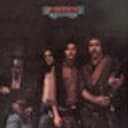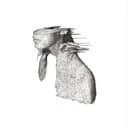Understanding the B Mixolydian Mode
The B Mixolydian scale follows the interval pattern 2-2-1-2-2-1-2 (whole-whole-half-whole-whole-half-whole), producing the notes B, C♯, D♯, E, F♯, G♯, A, B. As the fifth mode of E major, it begins on the dominant (fifth) degree of that parent scale, sharing all the same notes but establishing B as the tonal center. The defining feature is the natural seventh (A), which would be A♯ in B major, creating the signature Mixolydian sound that's simultaneously bright and open-ended. This single alteration—lowering the seventh by a half step—transforms the resolved character of B major into the suspended, energetic quality that makes Mixolydian essential for rock climaxes and blues-rock fusion. The scale naturally contains a B7 chord (B-D♯-F♯-A), which forms the harmonic foundation of its dominant character and explains its power in high-energy rock contexts.
Why B Mixolydian Creates Powerful Rock Moments
B Mixolydian occupies a special place in rock music due to its brilliant, high-energy character that creates memorable climactic moments and powerful guitar solos. The scale's position in the higher register gives it natural brightness and cutting power, making it ideal for peak moments in song arrangements where maximum intensity is required. On guitar, B benefits from open string resonance (the open B string) and sits in a register that projects powerfully through amplification, explaining why countless rock guitarists gravitate toward B Mixolydian for solos and riffs. The scale's built-in dominant seventh quality (B7) creates perpetual forward momentum without resolution, perfect for sustaining energy during extended rock jams, guitar solos, and climactic sections. The major third (D♯) provides brightness and optimism while the flattened seventh (A) adds bluesy edge and tension, creating the perfect sonic balance for anthemic rock moments that demand both power and emotional depth.
Chord Progressions and Harmonic Applications
The characteristic B Mixolydian progression is I-♭VII (B major to A major), which immediately establishes the modal sound and creates the powerful, driving quality found in rock classics and blues-rock fusion. Other effective progressions include I-♭VII-IV (B-A-E), the modal vamp I-♭VII-♭III (B-A-D), and the bluesy I-IV-♭VII pattern (B-E-A) that creates circular, groove-oriented harmonic movement. The scale works perfectly over B7 chords, providing resolved yet open harmonic color that sustains indefinitely without needing traditional cadential closure. Compared to B Dorian, B Mixolydian has a brighter, more optimistic character due to its major third (D♯ instead of D natural), while maintaining similar modal ambiguity through the flattened seventh. This makes it excellent for creating powerful, anthemic rock progressions and high-energy blues-rock passages that drive songs forward with relentless momentum. In jazz and fusion contexts, B Mixolydian provides sophisticated melodic material for improvisation over dominant seventh harmony.
Learning Tips for Piano and Guitar Students
For pianists, begin by playing the E major scale from B to B, which automatically produces B Mixolydian. This parent scale approach helps visualize the modal relationship and understand why B Mixolydian contains five sharps (C♯, D♯, F♯, G♯, and A♯ in the parent E major, but natural A in B Mixolydian). Practice the scale in both hands across two octaves, paying special attention to the natural A to internalize the flattened seventh sound. Use fingering: right hand 1(B)-2(C♯)-3(D♯)-1(E)-2(F♯)-3(G♯)-4(A)-5(B); left hand 4(B)-3(C♯)-2(D♯)-1(E)-4(F♯)-3(G♯)-2(A)-1(B). Set a metronome to 60-80 BPM and practice ascending and descending patterns while consciously listening for the dominant seventh quality. Improvise over a B7 chord or a simple B to A progression to develop your ear for the modal character and explore the scale's high-energy, climactic potential.
Guitarists benefit from B Mixolydian's natural resonance, particularly when incorporating the open B string into riffs and licks for added brightness and sustain. Visualize the scale as B major with a lowered seventh (A♯ becomes A natural), or use the fifth position of the E major scale pattern starting from B. Practice in multiple positions across the fretboard to develop comprehensive facility and pattern recognition, focusing on how the scale creates powerful, anthemic moments in the higher register. Study rock songs that use B Mixolydian for climactic sections and guitar solos, analyzing how the modal quality sustains energy without requiring harmonic resolution. Compare B Mixolydian directly with B Dorian by alternating between the two scales, noting how the single note difference (D♯ vs D natural) creates dramatically different emotional colors—this comparison develops modal awareness and expands your ability to choose the right modal color for different musical contexts.
Modal Relationships and Creative Applications
Understanding B Mixolydian's relationships to other modes and scales unlocks creative possibilities for composition and improvisation. While derived from E major, it shares all but one note with B major (A natural instead of A♯) and sits tonally between major brightness and the darker quality of B Dorian. Modal interchange techniques allow you to borrow chords from parallel modes—mixing B Mixolydian with B Dorian creates sophisticated harmonic movement by alternating between major and minor thirds (D♯ vs D natural), adding chromatic color and emotional depth to rock progressions. Advanced applications include using B Mixolydian for climactic guitar solos that build to peak moments, creating polymodal textures by layering different modes simultaneously, or employing it over dominant seventh progressions in blues-rock and fusion contexts. The scale appears across diverse genres—rock, blues-rock, fusion, and contemporary pop—making it one of the most effective modes for creating high-energy, memorable musical moments that combine brightness, intensity, and sophisticated modal color.





